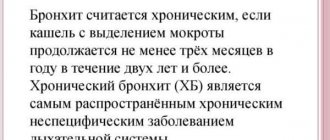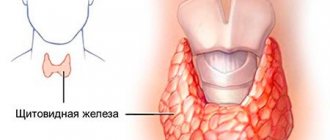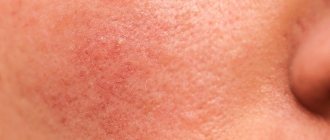Normal breathing of a healthy person (vesicular) is characterized by rhythmic respiratory movements, with a predominance of inhalation over exhalation. In certain diseases, it can be disrupted, causing changes in the frequency and depth of inhalations and exhalations. Biot and Kussmaul breathing are among these types of disorders. Pathological breathing is an important symptom that has its own individual pathogenesis. Based on this, it is possible to assume a leading diagnosis for the patient and begin immediate treatment.
General information
This type of breathing was first described in 1876 by the French physician Camille Biot, who, while working as an intern at a Lyon hospital, drew attention to the peculiar periodic breathing of a 16-year-old patient with a severe form of tuberculous meningitis.
Since this form of periodic breathing is often observed with meningitis, the phenomenon was called “meningitic breathing”, and subsequently, like other types of pathological breathing (Cheyne-Stokes, Kussmaul), it was named after the doctor who described this type.
Signs and symptoms of the disease
The main symptoms are often caused by mental stress. Let's look at this more specifically:
- Autonomic symptoms are manifested by respiratory disorders in the form of rapid inhalation and exhalation and lack of air, cardiovascular disorders in the form of pain, severe compression and rhythm disturbances, gastrointestinal tract and urination disorders.
- Changes affecting the patient's consciousness - fainting, loss of reality.
- Motor and muscle disorders - tremors in the limbs, cramps, cold or heat, numbness or burning sensations, as well as pain.
- Disorders of mental etiology - anxiety, fear, aggressiveness, general excited state.
Diagnosis must be carried out by specialist doctors: therapists, endocrinologists, neurologists. The patient's complaints are listened to, a breathing test is performed: the patient takes quick and deep breaths for several minutes in a row.
Electromyography may be prescribed to identify hidden muscle spasms. The examination scheme involves a blood test, ultrasound of the thyroid gland and peritoneum, and x-ray of the lungs. In serious cases, a comprehensive examination is prescribed.
Reasons for development
Any type of pathological breathing is a nonspecific reaction of the body, which occurs when the excitability of the respiratory center decreases or the inhibitory process increases in the subcortical centers due to a lack of oxygen or under the influence of toxic substances.
Respiratory disorder is also influenced to a certain extent by the peripheral nervous system, which can cause deafferentation (lack of the ability to conduct sensory stimulation in the central nervous system) of the respiratory center.
Biota's breathing is characterized by a repetition of the cycle of rapid breathing, its subsequent contraction and a period of delay (apnea), associated with the extinction of the excitability of the respiratory center.
The extinction of the excitability of the respiratory center occurs when:
- brain lesions;
- presence of intoxication;
- in a state of shock;
- presence of hypoxia.
Biot's respiration can be caused by the presence of:
- Encephalitis, in which the inflammatory process affects the medulla oblongata (possibly with encephalitis of any etiology). With viral encephalomyelitis, a change in the amplitude is observed at each inhalation or exhalation of successive respiratory movements, and episodes of apnea are observed at unequal intervals (sometimes following the deepest inhalation) .
- Brain abscess, which is a consequence of traumatic brain injury or a secondary process (develops on the affected side as a complication of purulent rhinitis, sinusitis, otitis, eustachitis, labyrinthitis, mastoiditis). Periodic breathing occurs when this inflammatory process spreads to the medulla oblongata or the toxic effects of an abscess.
- Atherosclerosis (chronic artery disease). Breathing problems occur when cholesterol plaques build up in the arteries supplying the brain.
- Tumors of the medulla oblongata (in most cases astrocytomas and spongioblastomas, but in some cases it is also possible to have gangliocytomas, arachnoendotheliomas and tuberculomas). Tumors cause compression of the medulla oblongata, which leads to disruption of breathing regulation.
- Hemorrhages in the cerebellar hemispheres. With slowly increasing hemorrhage, periodic breathing that appears is accompanied by depression of consciousness, miosis and gaze deviation in the direction opposite to the affected hemisphere.
This type of breathing is observed in some severe cardiovascular diseases, as well as in the terminal stage of tuberculous meningitis.
The essence of psychogenic breathing disorder
HVS, that is, hyperventilation syndrome or increased breathing, manifests itself in a state when the above-described scheme is disrupted. This happens under the influence of a psychic resonance. Medicine has long associated hot water supply with a high degree of stress.
Today this disease is quite common. It often affects those who snore in their sleep. Overall, it affected more than 12% of the world's population.
Pathogenesis
The respiratory muscles are innervated by motor neurons of the spinal cord, which receive impulses from the respiratory center located in the medulla oblongata, and the diaphragm is innervated by the axons of motor neurons, which are localized at the level of the III-IV cervical segments of the spinal cord.
Regulation of breathing is carried out by integrated, but anatomically separate structures of the central nervous system - the system for regulating automatic breathing (includes the medulla oblongata and the pons) and the system for regulating voluntary breathing (includes cortical and forebrain structures).
Each of these systems consists of:
- certain structures of the central nervous system;
- effector link (includes the diaphragm and intercostal muscles);
- neuroreceptor unit (includes proprioceptors, chemoreceptors, receptors of the lungs and upper respiratory tract).
Regulation of breathing is based on the principle of feedback - when the gas composition of the blood changes, the breathing parameters reflexively change, ensuring the maintenance of the partial pressure of oxygen in the arterial blood (Pao2) and alveoli (Paco2) at an optimal level.
Changes in Pao2 and Paco2 are detected by chemoreceptors (central and peripheral), which detect the difference between normal and existing values, and then transmit the received information to the respiratory neurons of the brain stem.
After receiving information, impulses are formed in the respiratory center, which travel along the nerves to the respiratory muscles. Thanks to the work of the respiratory muscles, adequate ventilation is established with minimal changes in blood gas tension.
Breathing Biota occurs when the respiratory center is damaged, which develops during shock conditions, encephalitis, etc.
Damage to the respiratory center causes disorders of the automatic breathing control system.
The pathogenesis of this breathing disorder is associated with damage to the brain stem (middle pons). This affected area of the brain becomes the source of a slow rhythm, which is normally suppressed by the influence of the cerebral cortex. When the middle part of the pons is damaged, afferent impulses through the affected area are weakened and breathing becomes wave-like.
Since the threshold of excitability of the respiratory center increases, the respiratory center does not respond to the normal concentration of carbon dioxide in the blood. Since an increase in CO2 concentration is required to excite the respiratory center, respiratory movements stop (apnea occurs). After the accumulation of CO2 and stimulation of the respiratory center, respiratory movements of normal frequency and depth are resumed.
Treatment tactics
Modern approaches to treatment include:
- Psychotherapeutic sessions , that is, the patient himself changes his attitude towards the disease. Experienced doctors explain the essence of the disease and show that it does not have serious consequences that cannot lead to death. Understanding this frees many patients from the obsessive clinical picture.
- Respiratory complexes . Today, several methodologies are able to correct breathing. They are based on holding your breath while inhaling and extending your exhalations. If there is a lack of air, the technology of breathing into a bag made of airtight material is used. This increases the concentration of beneficial carbon dioxide in the blood and eliminates symptoms. Belly breathing through diaphragmatic movements is widely popular. With this technique, exhalation is twice as long as inhalation. Practice breathing through one nostril. This is how air exchange returns to normal, oxygen levels, as well as carbon dioxide, are leveled out.
- Physiotherapy is of no small importance for the body : relaxing baths, inhalations, swimming pool, massages and aromatherapy.
- Normalization of metabolism through magnesium, as well as calcium and beneficial glutamic acid.
- Internal tensions are also eliminated with medications. They reduce excitability. Antidepressants and anxiolytics have a great effect. The treatment must be supervised by a doctor.
An integrated approach to therapy guarantees complete cure for most patients. It is also worth remembering that breathing disorders are, in principle, curable; for example, for apnea, CPAP therapy is used. The main thing is not to self-medicate and not to start the process, but to consult a qualified doctor in a timely manner.
Causes of other types of respiratory failure
Neuromuscular respiratory failure can result from damage to the spinal cord, motor nerves, or muscle weakness (atrophy, tetanus, botulism, myasthenia gravis), which causes disruption of the respiratory muscles.
The thoracodiaphragmatic type is associated with disorders due to deformation of the chest, its pathological conditions, with a high position of the diaphragm, pneumothorax, and compression of the lung.
Vascular respiratory failure is associated with vascular disorders.
Differential diagnostic methods
Before making a diagnosis, the doctor must:
- Compile and study the patient’s medical history based on complaints, life history and existing diseases.
- Carry out a general visual inspection.
- Conduct a specialized examination of the nervous system (check reflexes, speech and gestures, examine the head for injuries).
- Prescribe a number of instrumental and laboratory tests, including:
- MRI and computed tomography of the brain - to determine the location of possible damage;
- general and biochemical blood and urine tests - to determine the nature of the pathological process responsible for damage to the respiratory center;
- spirography method - to determine the nature of the respiratory cycle pattern.
- Based on the available data, make a diagnosis and correlate it with the causes of this type of breathing.
- Prescribe appropriate treatment.
Main types of pathological breathing
There are many diseases and types of breathing associated with them. These include:
- Bradypnea: there is a decrease in the number of respiratory cycles (less than twelve per minute), which usually occurs with damage to the central nervous system, chronic oxygen starvation, the effect of narcotic drugs and a decrease in the concentration of carbon dioxide in the body (hypocapnia).
- Tachypnea: characterized by an increase in the number of respiratory cycles (more than twenty-four per minute), shallow breathing, which helps to reduce the ventilation patency of the lungs. It manifests itself in various fevers, diseases of the respiratory system (bronchitis, pneumonia, etc.), dysfunction of the central nervous system, pain in the chest and anterior abdominal wall.
- Hyperpnea: rapid breathing, which is accompanied by deep breaths and occurs during physiological, mechanical or mental stress, fever, excess production of thyroid hormones.
- Apnea: characterized by the cessation of respiratory cycles. It occurs when the concentration of oxygen or carbon dioxide in the body decreases (in patients under anesthesia), under the influence of narcotic drugs, etc. There is a syndrome of “night apnea,” which is characterized by involuntary cessation of breathing during sleep for several minutes. This syndrome is very dangerous for patients and requires an observer to monitor breathing.
- Apneustic breathing: breathing accompanied by a pause at the end of inspiration. In this case, the chest has a characteristic expanded shape.
- Kussmaul breathing: loud breathing with intense work of the chest and respiratory muscles, reminiscent of the breathing of a cornered animal. May occur during intoxication with methyl alcohol and hyperglycemic coma. In this case, malfunctions occur in the functioning of the brain receptors responsible for the respiratory center against the background of hypoxia and poisoning.
- Cheyne-Stokes breathing: breathing cycles alternate with stops, while breathing first gains strength and depth (five to seven movements), then declines, followed by a pause.
- Grokk breathing: the only difference between this type and Cheyne-Stokes breathing is that instead of pauses of apnea, periods of shallow breathing occur.
- Breathing by Camille Biot: quiet breathing, in which breathing cycles (four to five) alternate with stops. The breathing rhythm looks like waves. This is typical for agonizing patients and patients with serious damage to the central nervous system.
All of the above types of breathing are signs of diseases and do not appear normally; if you detect the slightest resemblance to one of them, you should immediately consult a doctor.
Blood gas composition
According to the gas composition, pathology is divided into compensated (when the gas ratio is normal) and decompensated (the presence of oxygen deficiency or excess carbon dioxide in the arterial blood).









